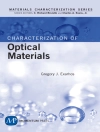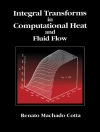Fourier Transform Infrared microspectroscopy (FTIR) was first developed by William Coblentz in 1905 for analytical purposes. It has been established as a powerful analytical method to analyze a wide range of materials. The most convenient way to analyze the molecular structure was to prepare KBr pellets with small amount of chemical species. Currently, the development of the Universal Attenuated Total Reflectance (UATR) allows the use of Zn Se-Diamond crystal to acquire FTIR spectra directly from the sample with no special preparation. These traditional FTIR analyses have been made with devices capable of performing single measurements, thus, providing a single IR spectrum of the sample. Recent major technological development in FTIR instrumentation was development of microscopes and imaging systems. These devices are now capable of imaging larger sample area, providing not only spectroscopic information but also spatial distributional information. In addition, the developmentof Focal Point Array (FPA) has made FTIR imaging an emerging area of chemical imaging research. The aim of this book is to summarize in a single document the research work that is being performed using UATR and IR imaging in selected emerging applications in plant materials and biological samples. This book provides the readers new knowledge, updates information, emerging applications, and understanding of the potential use of FTIR Microspectroscopy.
Jadual kandungan
Part 1: Overview.- Attenuated Total Reflectance (ATR).- Universal Attenuated Total Reflectance (UATR).- Focal Plane Array Detection (FPA).- Part 2: Polymers and Materials.- Diffusion of solvent across polymer membrane.- Polymer blends/composition.- Additives and contaminants.- Laminated/layered polymers.- Surface functionalization.- Part 3: Plant and Biopolymers.- Cellulose development in cotton fibers.- Structure and orientation of biopolymers in plant cell walls.- Plant cell wall biopolymers.- Biopolymers transformation.- Screening of cell wall mutants.- Part 4: Medicine and Biology.- Application to biological samples.- IR imaging in biomedicine.- IR application in cancer research.- IR imaging of protein aggregation in living cells.- Study of protein crystallization.- Wound healing.- Pharmaceutical drug formulations/release/dissolution.- Part 5: New applications of FTIR imaging.
Mengenai Pengarang
Dr. Noureddine Abidi is a Professor in the Department of Plant and Soil Science and Director of the Fiber and Biopolymer Research Institute at Texas Tech University. Dr. Abidi’s research interests include the physical and chemical characterization of biopolymers (with special emphasis on the use of FTIR microspectroscopy), preparation of advanced polymeric and composite materials from biopolymers and the synthesis of environmentally friendly bioproducts. He earned an advanced degree in Polymers, Interfaces, and Amorphous state and a Ph D in Theoretical, Physical, and Analytical Chemistry from the University of Montpelier II (France).












